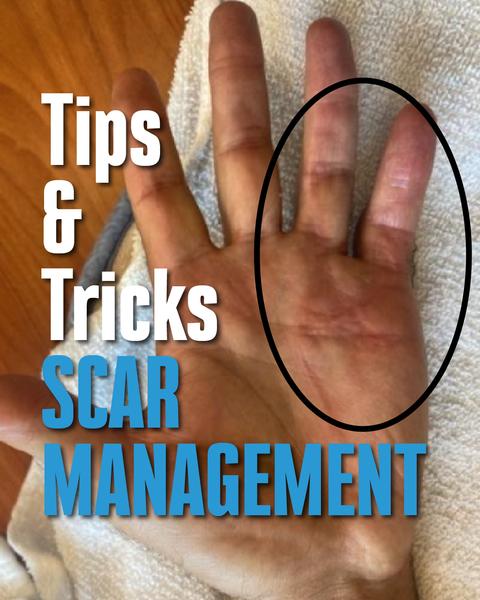Scar Management: Tips and Tricks
By Shannon Caldwell, OTD, OTR/L - October 7, 2020
Scar Management: Tips and Tricks
What is it? Scar management includes a variety of techniques to optimize healing following a surgery or injury.
Scarring is a natural part of the healing process where the body begins to form fibrous tissue in order to stabilize surrounding structures. This includes any bone, ligaments or tendons in that area. Anyone who has had an open surgery will require scar management. Your Occupational or Physical Therapist can provide you with scar management techniques such as:
-
Scar massage: After your sutures are removed, ask your therapist about doing scar massage. This is typically done 2-3 weeks after surgery once the incision site has healed. You can use a light lotion such as cocoa butter or vitamin E oil to gently rub along the scar with enough pressure to change the skin from pink to white. Massage the scar in all different directions: i.e. side to side, up and down, circles, etc. (See picture 1). Perform 5-10 minutes, 2-3x/day.
-
Scar pads: These are available over the counter, or if your scar is an unusual shape your therapist can provide you with a silicone scar pad made of Otoform or Elastomere. This will help soften your scar to allow increased mobility.
-
Desensitization: If your scar is sensitive, try using different textures or vibration to rub along the scar. Use a light massager or the end of an electric toothbrush to apply vibration to your scar. Do for 1-2 minutes, 2-3x/day.
-
Modalities: Ask your therapist about the use of modalities for scar management. This may include ultrasound, electrical stimulation, cupping, or iontophoresis.
-
Sun protection: It is important to keep an immature scar out of the sun. Apply SPF daily to your scar or cover with a band-aid or clothing for additional protection.
Why do it?
Scars can take up to two years for scars to fully mature. If scars are not treated properly, this may cause you problems in the future. Your scar may not only have unpleasant looks, but can also cause pain and limit your range of motion. This may make it difficult for you to perform ADLs (Activities of Daily Living) depending on where your scar is.
If your scar crosses over a joint, it is especially important to perform these techniques daily to restore your range of motion. Scars of the wrist and hand are therefore especially important to manage properly.
